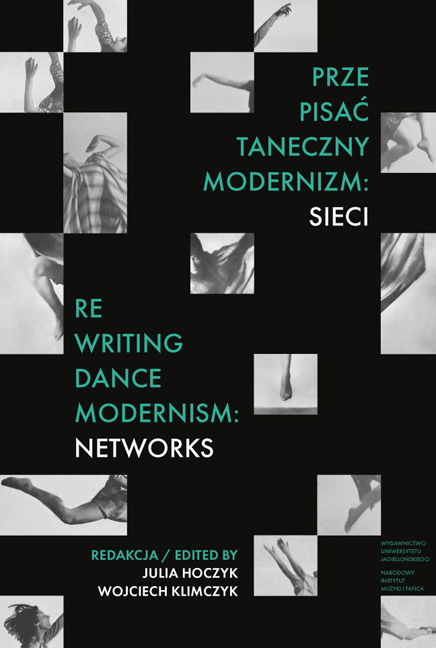Book contents
- Frontmatter
- Contents
- Prze-pisać taneczny modernizm: sieci
- Metodologie: usieciowianie tanecznego modernizmu
- Transmisje: transnarodowe trajektorie tanecznego modernizmu
- Poszerzenia: taneczny modernizm w słowiańskiej Europie Środkowej
- Methodologies: Networking Dance Modernism
- Transmissions: Transnational Trajectories of Dance Modernism
- Expansions: Dance Modernism in Slavic Central Europe
- Biogramy autorów
- Authors’ Biographies
- Indeks / Index
- Miscellaneous Endmatter
- Miscellaneous Endmatter
Mary Wigman and Asia: Between Orientalism and Transnationalism
Published online by Cambridge University Press: 01 March 2024
- Frontmatter
- Contents
- Prze-pisać taneczny modernizm: sieci
- Metodologie: usieciowianie tanecznego modernizmu
- Transmisje: transnarodowe trajektorie tanecznego modernizmu
- Poszerzenia: taneczny modernizm w słowiańskiej Europie Środkowej
- Methodologies: Networking Dance Modernism
- Transmissions: Transnational Trajectories of Dance Modernism
- Expansions: Dance Modernism in Slavic Central Europe
- Biogramy autorów
- Authors’ Biographies
- Indeks / Index
- Miscellaneous Endmatter
- Miscellaneous Endmatter
Summary
Addressing the topic of “Nation and World in Modern Dance” at the Muzeum Sztuki in Łódź in 2016, I highlighted the tension between national and transnational approaches to modern dance history, noting an “issue that has confronted historians of modern dance over the last hundred years:”
Do we emphasize transnational connections and risk downplaying the significant role of local contexts and national politics in shaping modern dance? Or do we emphasize local circumstances and national continuities and risk downplaying the significant role of transnational encounters?
Over the last decade, I have pondered how to script a transnational history of modern dance, reversing the emphasis of my first monograph on the dances of Mary Wigman, titled Ecstasy and the Demon. Although the monograph closed with a chapter on the impact of Wigman on American modern dance in the 1930s, Ecstasy and the Demon largely focused on how Wigman's works altered over time in relation to the changing contours of the German nation-state, as its government – and geographic boundaries – shifted from the Wilhelmine Empire (when Germany had colonies in East Africa, Cameroon, Namibia, New Guinea, and Samoa) to the Weimar Republic (when the Versailles treaty reassigned the control of German colonies to other European powers) to the Third Reich (when Hitler annexed significant portions of Europe) to the postwar occupation and division of Germany (when the Allies drew new boundaries, dividing the country into East and West and reassigning Alsace to France and Silesia (Śląsk) and Danzig (Gdańsk) to Poland). Ecstasy and the Demon was written during the years surrounding the Fall of the Berlin Wall, and from that perspective I was intensely aware of how the German state and German artistic culture had undergone radical shifts over the last century.
By the time the second edition of Ecstasy and the Demon was published in 2006, the unified German state was a matter of course, while an increasingly globalized world had compelled scholars in the arts and humanities to recognize the limitations of approaches premised on the nation-state and to innovate approaches premised on cross-border circulation and migration.
- Type
- Chapter
- Information
- Re-writing Dance Modernism: Networks , pp. 427 - 446Publisher: Jagiellonian University PressPrint publication year: 2023



